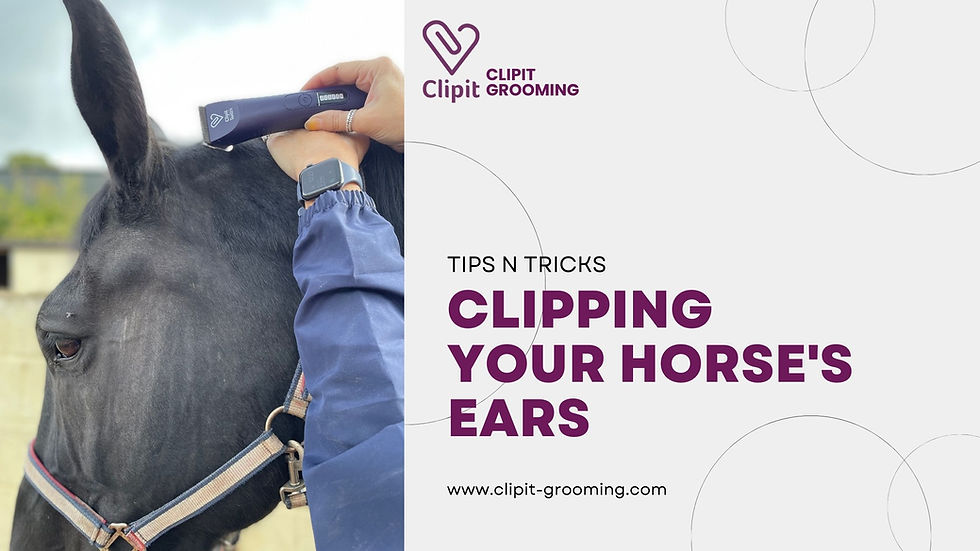Summer Bathing Tips For Your Horse
- Jul 24, 2020
- 3 min read
Updated: Jun 14, 2024
Summer is the perfect time to give your horse a refreshing bath, helping them stay clean and comfortable in the heat. However, bathing a horse requires some knowledge and preparation to ensure it's a safe and pleasant experience for both of you. Here are some essential tips for bathing your horse during the summer months.

Gather Your Supplies For Bathing Your Horse
Having all your supplies ready before you start will make the bathing process smoother and quicker. You will need:
A hose with a spray nozzle,
A good quality horse shampoo,
Several buckets of warm water,
Large body sponge,
A pair of deshedding gloves,
Sweat scraper,
Towels,
Cooler rug.
Apply the Shampoo To Your Horse
First, wet the horse all over down to the skin, using the hose or a body sponge. Horses will accept this better if you start with a trickle of water and work up from the hoofs, wetting the legs and then the body gradually. Wet the mane and tail too.

Make up a bucket of soapy water, and fill a dilution bottle or a shampoo dilution bottle with the shampoo and squirt it all over the horse. Working from the neck back and down. As each section is soaped, use the deshedding gloves too gently to massage the skin and work up a lather. You can also use your fingers as when shampooing your own hair. Keep the soapy parts wet, and rinse as you work by running the hose or squeezing out a large spongeful of clean water above the part where you are scrubbing clean and free of soap before you move on.

The face and head should be washed with as much water as the horse will tolerate and as little soap as you can use and get them clean. Often hot towelling works better, especially on horses that throw their heads up and resist. Don't let water run into their ears and eyes, be careful and gentle when working on the head, most horses hate water on their heads, and a bad experience can make your horse difficult the next time.
The mane and tail should also be washed and thoroughly rinsed, with special attention given to the skin and roots of the hair. The skirt of the tail can be doubled up and dunked into a bucket to rinse it.

Scrub gently in circular motions to lift dirt and sweat from the coat. Pay special attention to particularly dirty areas.
Rinse Thoroughly
Rinse off all the shampoo thoroughly, ensuring no residue is left behind, as it can cause skin irritation. Again, start from the top and work your way down. Use your fingers to work through the coat and make sure all soap is removed.
After rinsing, use a sweat scraper to remove excess water from your horse’s coat. This helps them dry faster and prevents the coat from becoming waterlogged. Follow up with towels to dry the face, ears, and other sensitive areas.

Conclusion
Bathing your horse in the summer can be a delightful experience that not only keeps them clean but also strengthens your bond. By following these tips, you can ensure a safe, effective, and enjoyable bath time for your horse. Remember, every horse is different, so pay attention to their reactions and adjust your approach accordingly. Happy bathing!








Comments